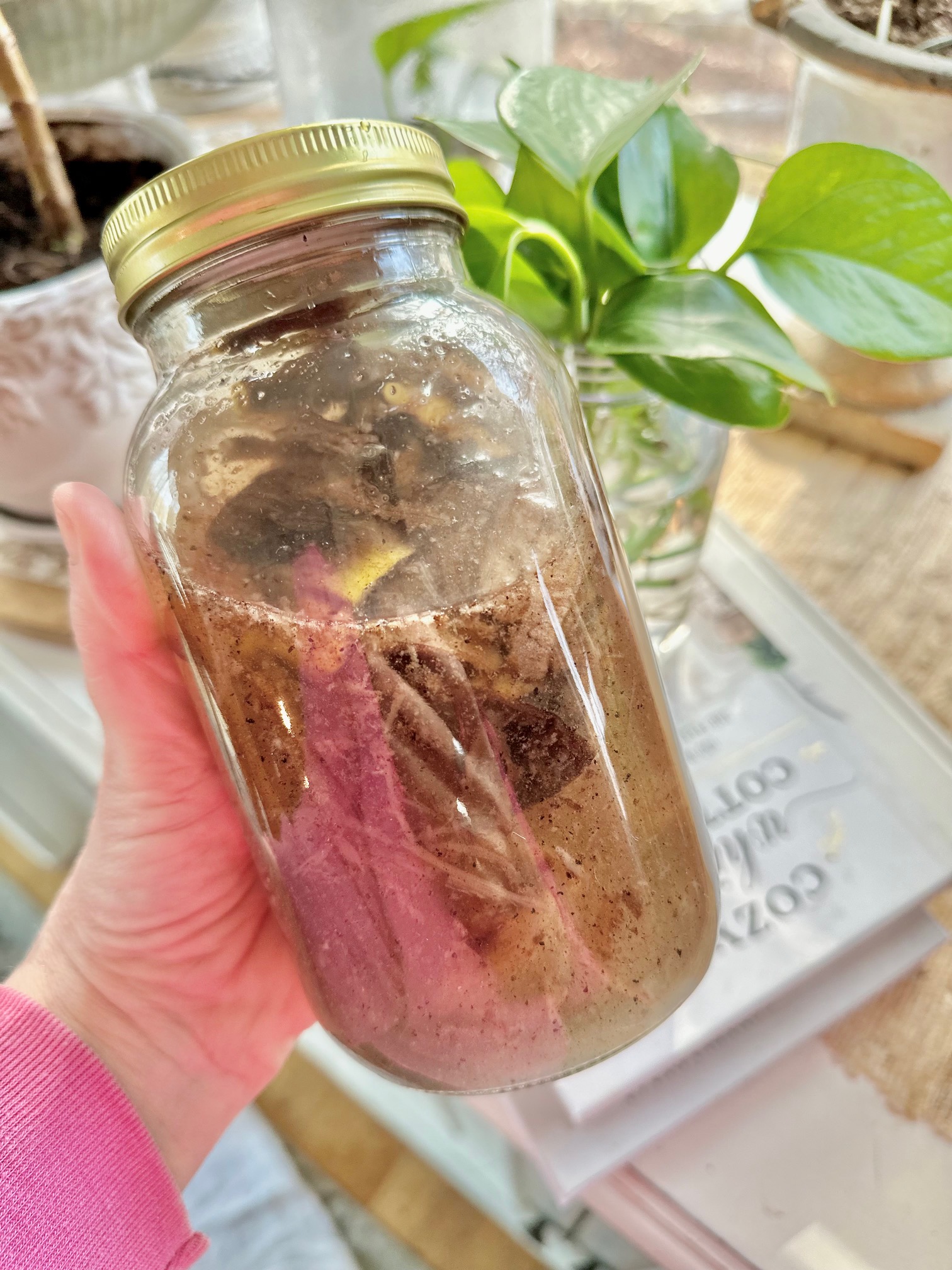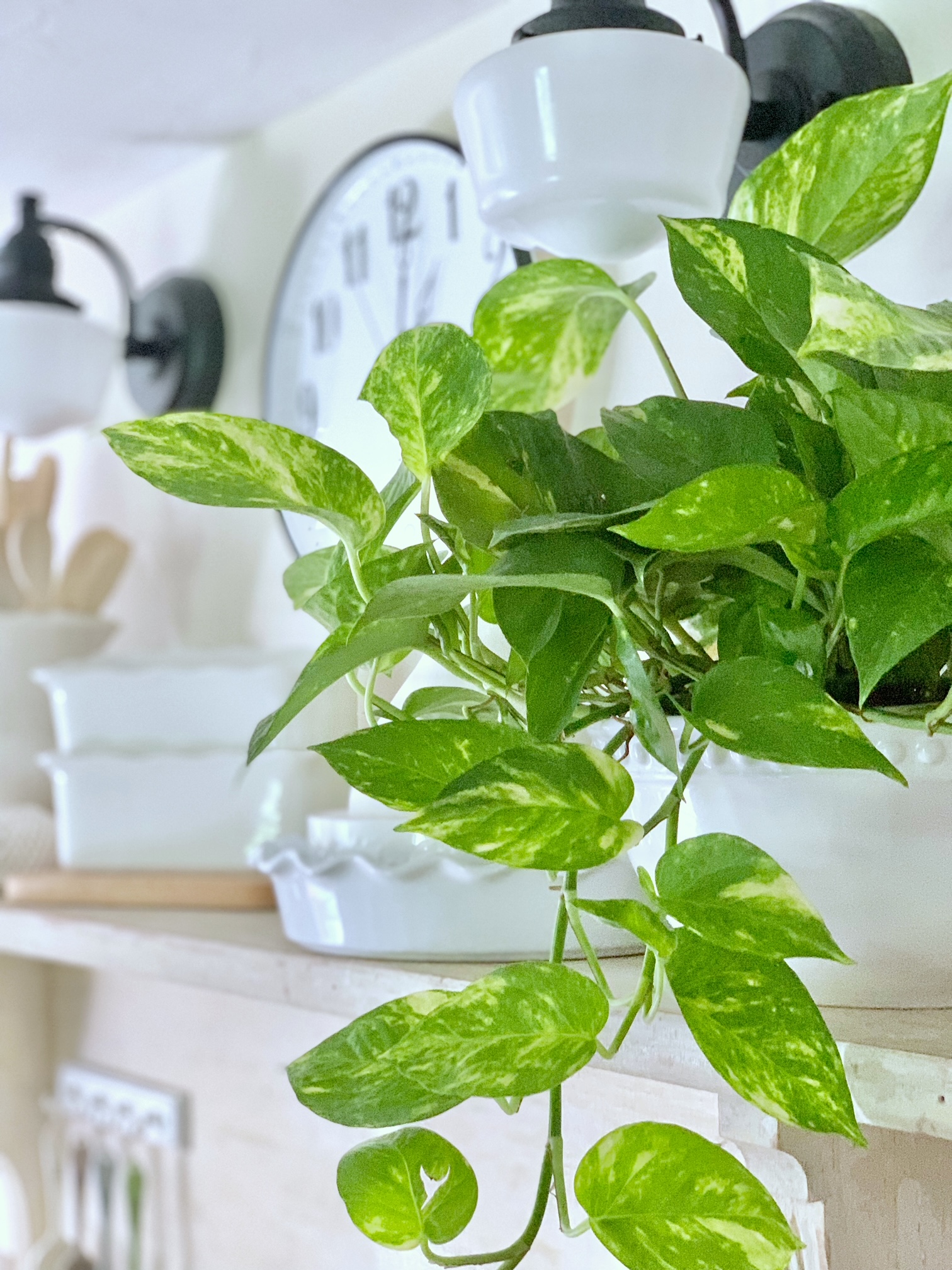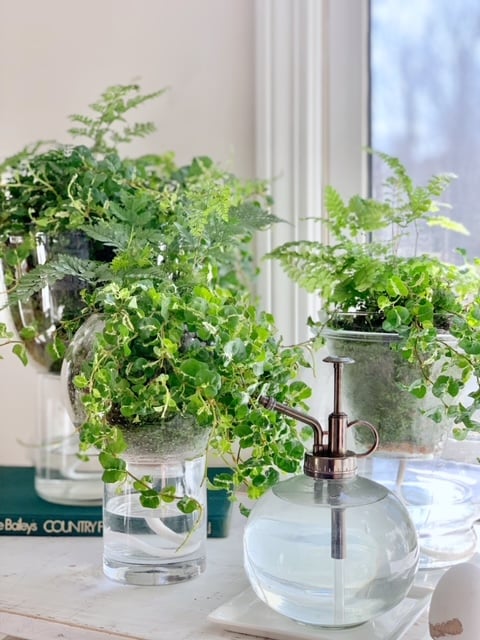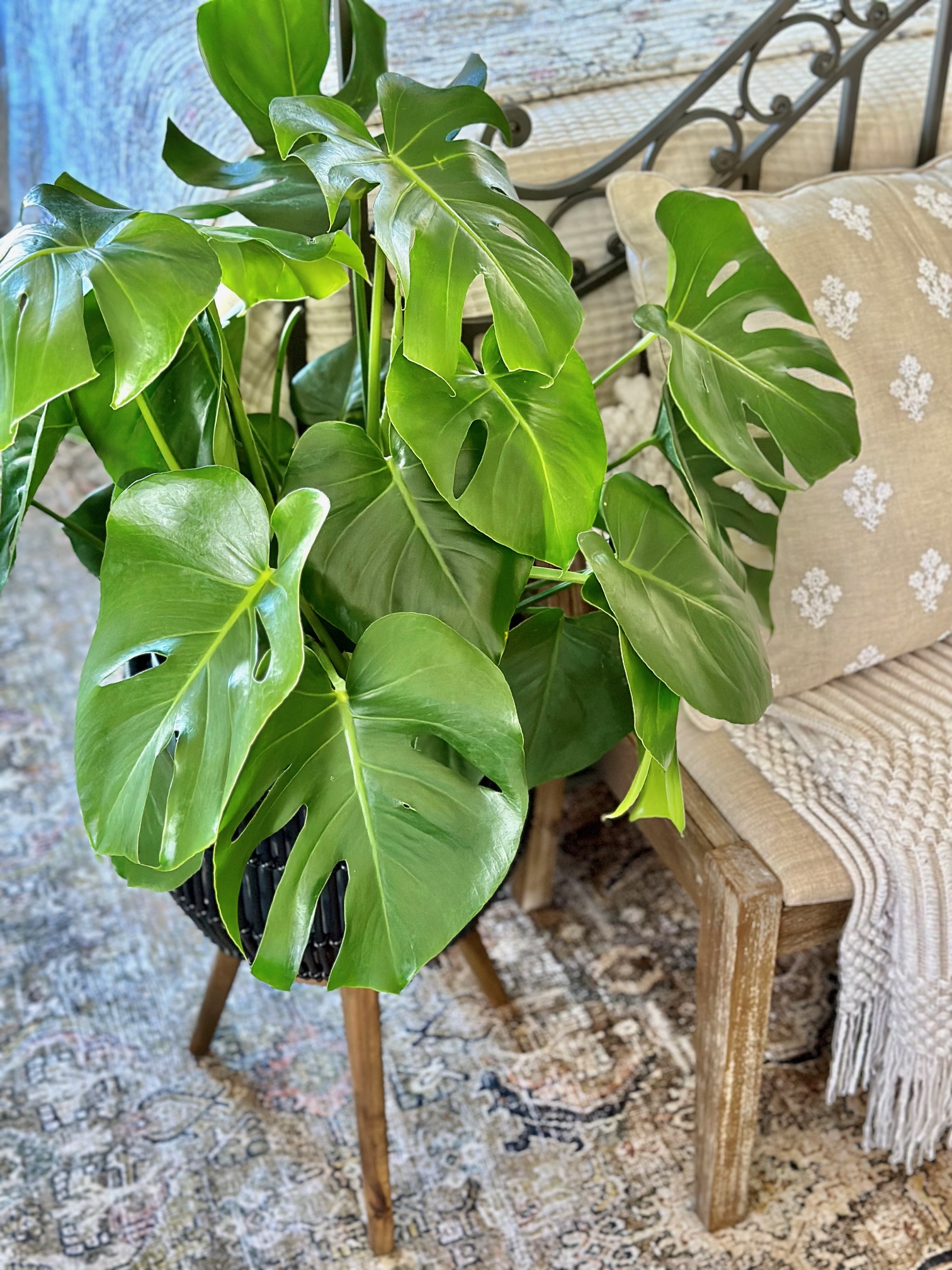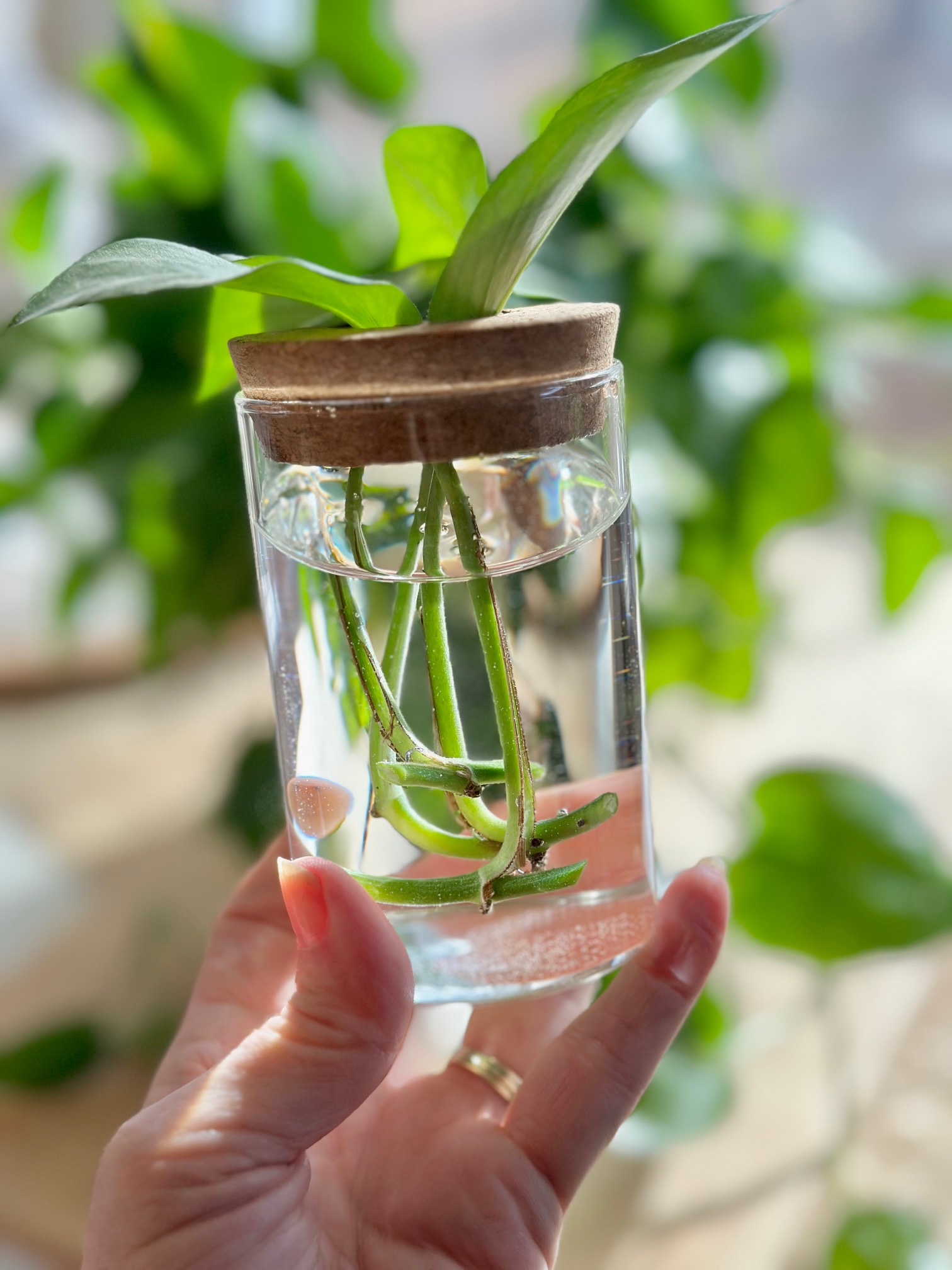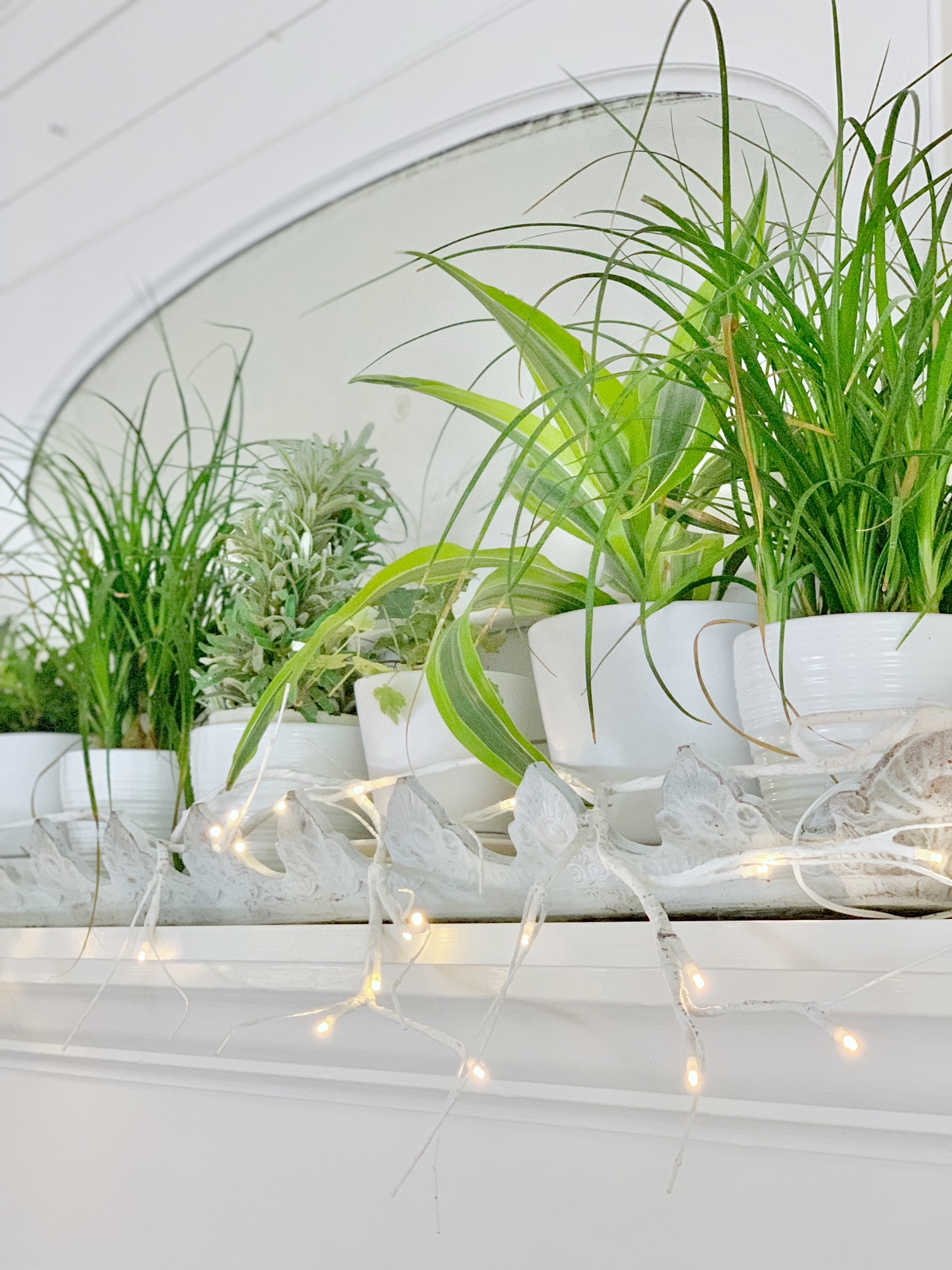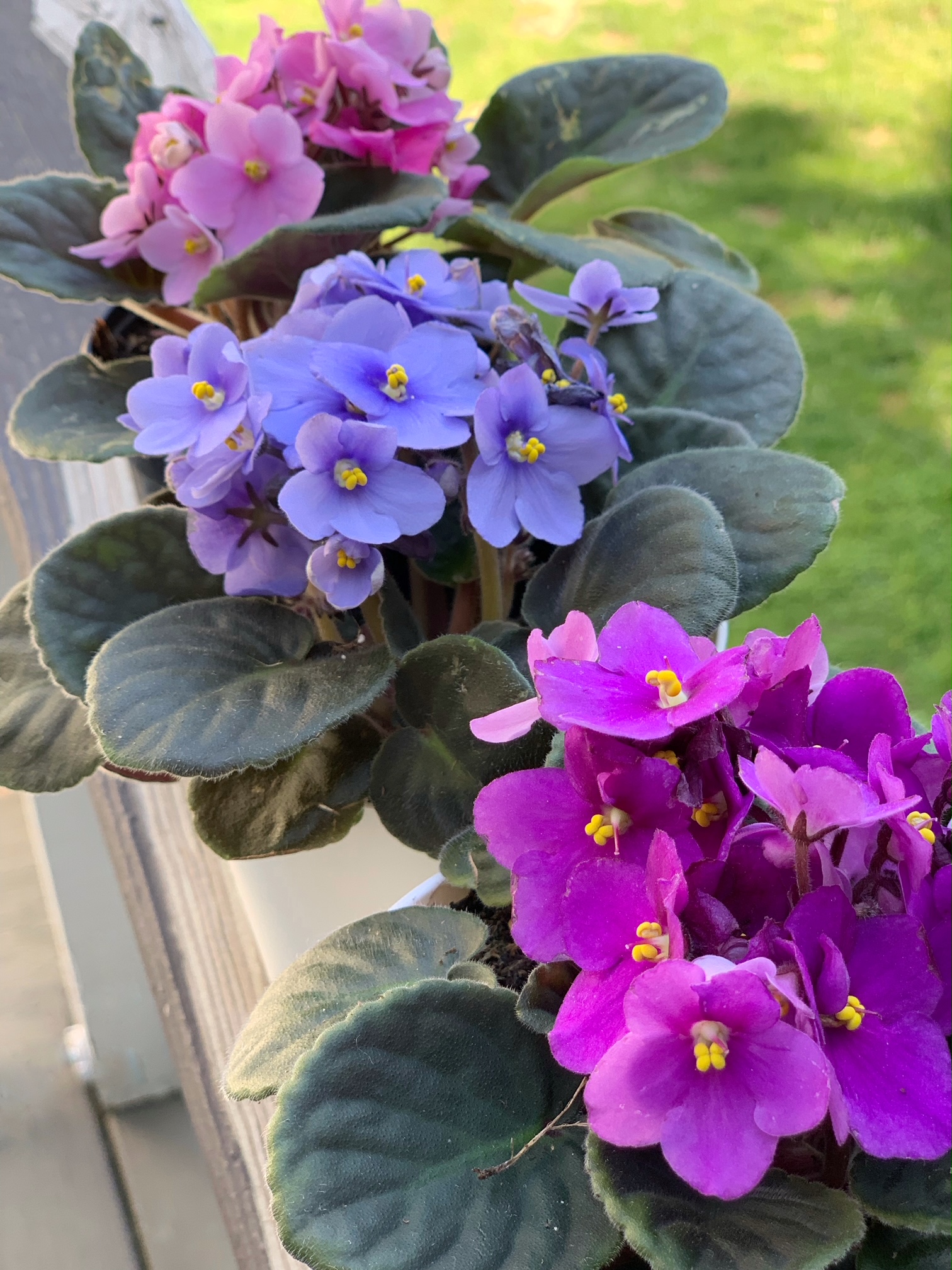Pothos plants are a popular choice for both indoor and outdoor gardeners due to their striking foliage and easy maintenance. These plants are relatively low-maintenance, but they still require a bit of care to thrive. One important aspect of caring for Pothos plants is fertilization, which can provide them with the necessary nutrients for healthy growth and vibrant foliage. In this post, we will explore the benefits of fertilizing Pothos plants and provide tips on how to choose the right fertilizer for your plant.
Whether you’re a seasoned plant lover or new to the hobby, this guide will help you take your Pothos plant care to the next level. In this post, DIY Pothos Fertilizer: The Best Kept Secret for Lush Plants, I’ll guide you through concocting homemade compost teas and brews using kitchen scraps for the perfect pothos fertilizer DIY regimen.

*This post includes affiliate links, for more info on affiliate links visit here
The Benefits of Fertilizing Your Pothos Plant
- Improving Growth: Fertilizing your Pothos plant can accelerate its growth rate and enhance overall health. The nutrients supplied by homemade fertilizers foster robust root systems and foliage development.
- Enhanced Flowering: For flowering Pothos plants, regular fertilization promotes increased flower production, adding vibrancy to your indoor garden.
- Heightened Resistance to Diseases and Pests: Homemade fertilizers strengthen your Pothos plant’s innate defenses, reducing its vulnerability to diseases and pests.
- Nutrient Replenishment: As your Pothos plant matures, it exhausts the nutrients present in the soil. Consistent fertilization ensures the replenishment of essential nutrients, sustaining the plant’s vitality.
- Cost-Effective Solution: Homemade fertilizers offer an economical means to maximize the potential of your Pothos plant, resulting in long-term savings.
- Environmentally Conscious Approach: By opting for homemade fertilizers, you support a more environmentally friendly method of plant care, eliminating the need for harsh chemicals or pesticides.
- Simplicity in Application: Fertilizing your Pothos plant requires minimal effort and can be accomplished with ease. Armed with basic knowledge and tools, you can maintain the health and happiness of your plant effortlessly over time.

Determining the Best Fertilizer Approach for Pothos
When it comes to fertilizing Pothos plants (also called Devil’s IVY), the options are plentiful, ranging from synthetic to organic varieties. Synthetic fertilizers, while fast-acting, can pose risks like excess nutrients and root burn if not applied properly. Conversely, organic fertilizers offer a safer alternative, releasing nutrients gradually and enriching soil quality over time. The word “organic” refers only to things that are derived or harvested from once-living plants or animals.1
A critical factor in selecting the right fertilizer lies in understanding the N-P-K ratio, representing nitrogen, phosphorus, and potassium levels2. Pothos plants, being light feeders, thrive with a balanced NPK ratio like 20-20-20 or 10-10-10.
Opting for organic fertilizers opens doors to DIY solutions. Banana peels, coffee grounds, green tea, and even aquarium water can serve as ingredients for homemade fertilizers. For instance, a homemade brew of one cup of fresh coffee grounds steeped in a gallon of water for 24 hours yields a nutrient-rich concoction ideal for regular plant watering.
Embracing organic DIY fertilizers not only nourishes Pothos plants but also nurtures a sustainable approach to plant care. Let’s explore these alternatives further.
Organic fertilizers are a great option for providing necessary nutrients slowly and in smaller quantities.

DIY Homemade Fertilizers Chart for Pothos Plants
The chart below summarizes various homemade fertilizers for Pothos plants, highlighting their benefits and application methods. Experimenting with combinations of these ingredients can further enhance their effectiveness, offering a customizable approach to plant care. Suggested combinations are below with step-by-step instructions for a recipe later in this post.
| Fertilizer | What It Provides | How to Use |
|---|---|---|
| Gelatin Fertilizer3 | Contains nitrogen for gradual plant growth | 1 pouch of unflavoured gelatin to 1/4 cup (50mL) cold water in a 1 quart (1 litre) pitcher. Allow the gelatin to soften for 1 to 2 minutes, add 1 cup (250 mL) tap water, stir to dissolve, then slowly fill the pitcher with cold water. Apply to soil once a month. Optionally, add cut-up banana peels for better results. |
| Fresh Banana Peel Fertilizer | Potassium and other nutrients for healthy growth | Chop fresh peels and place in a jar with water. Let sit for 2-3 days then strain. Mix the banana water with water in a 1: 10 ratio (1 part fertilizer to 10 parts water) and water your pothos. |
| Dry Banana Peel Foliar Spray | Rich in potassium for healthy growth | Dry banana peels in oven at 100 degrees for 3 hours, grind them into a fine powder, mix with water, and spray on plants once a month. Wash banana skins. |
| Aquarium Water Fertilizer | Contains phosphorus, ammonia, and key minerals to promote fast growth and green color | Save old aquarium water, let it sit to settle dirt, pour clear water from the top into a jug (1 part aquarium water 2 parts clean), and water Pothos plants every 1-2 weeks. Adjust frequency based on plant growth. |
| Epsom Salt Fertilizer | Supplies magnesium and sulfur for greener plants | Mix 1-2 tablespoons of Epsom salt in 1 gallon of water and fill a spray bottle. Spray it on your plant once or twice a month. |
| Leftover Black Coffee or Tea | Rich in nitrogen for healthy leaf growth4 | Mix used tea leaves or black coffee with water, dilute 1:10 with water(1 part fertilizer to 10 parts water). Water Pothos plants once a month. |
| Worm Compost Tea Fertilizer | Provides earth-friendly, food-rich nutrients for greener leaves and healthy growth | Put worm compost in water overnight, use the tea every 3-4 weeks based on plant needs. Get the recipe here! |
| Boiled Vegetable Water | Contains vital minerals and vitamins for healthy growth | Save and cool. Water undiluted after boiling vegetables, use it to water plants every 7-10 days. |
| Green Tea Fertilizer | Provides calcium, potassium, phosphorus, and magnesium for overall plant health | Soak 1 green tea bag in 1 gallon of water, use the water on plants every 3-4 weeks. |
| Potato or Rice Cooking Water | Rich in potassium, calcium, and other vital minerals to restore soil nutrients | After boiling potatoes or rice, let the water cool and use it undiluted to water Pothos plants every 2-4 weeks. Adjust frequency based on plant needs. |
| Eggshell Tea Fertilizer | Contains calcium for stronger plants | Boil a gallon of water and add ten to twenty clean, dry eggshells. Let the shells sit in the water overnight, then strain them out.5 Pour the liquid onto each plant twice a month. Adjust frequency based on pot size and plant growth. |
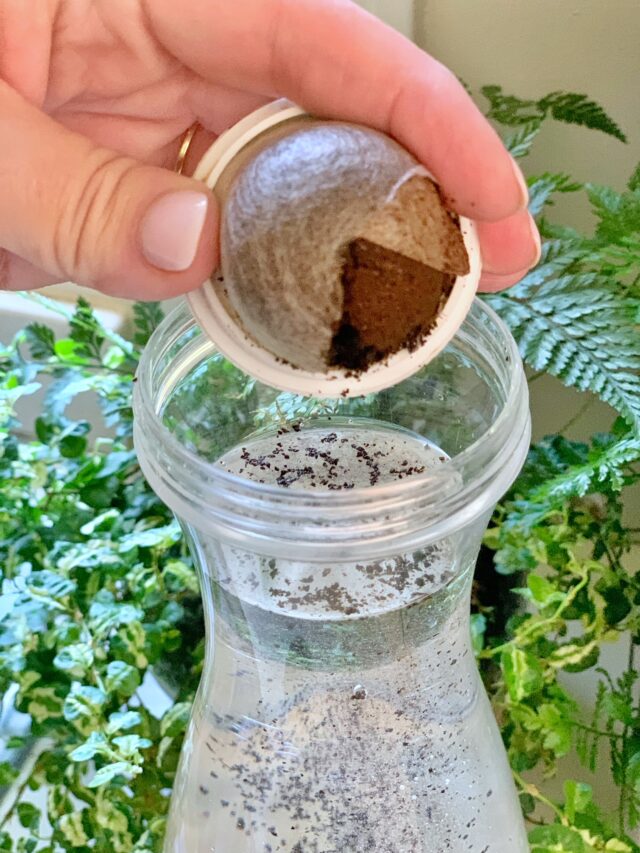
Crafting Customized Fertilizer Blends
Get your mixologist hat on – we’re about to concoct some custom plant food cocktails! Like any good bartender, we’ll rely on our knowledge of complementary ingredients to create bespoke blends that provide a nutrition boost. Sometimes two DIY fertilizers can pack more of a combined punch than either could solo.
Aquarium Water + Eggshell Tea
The aquarium water delivers a nutrient-rich liquid fertilizer to the roots and soil, while the eggshell tea provides supplemental calcium for strong overall plant growth through the soil as well.
Worm Compost Tea + Fresh Banana Peels
The worm castings offer a gentle organic nutrient feed, combined with the immediate potassium boost and soil health benefits from fresh banana peels as the vines grow.
Boiled Veggie Water + Black Coffee Watering
Boiled veggie water makes for an excellent occasional soil drench, while used coffee grounds can be mixed into pots for a slow-release nitrogen fertilization approach between veggie water applications.
Green Tea Water + Epsom Salt Foliar Spray
Brewed green tea provides a gentle liquid fertilizer, coupled with the foliar magnesium and sulfur absorption benefits supplied by the Epsom salt spray on the pothos leaves.

Fertilizing Your Pothos
How Often Should You Fertilize
Think of feeding your pothos plants homemade fertilizer as giving them an occasional botanical treat, like a nourishing meal! The frequency depends on the plant’s growth speed and overall health.
As a general rule, aim to fertilize every 2-4 weeks during the active growing spring and summer season.
Pay attention to the plant’s signals – fertilize more often if they seem sluggish and pale, indicating nutrient deficiency. Fertilize less often for thriving plants to avoid overfeeding. Finding the ideal balance keeps pothos looking fabulous!
Integrate Fertilizer in Regular Watering
Another great approach is to incorporate small amounts of homemade fertilizer directly into your standard pothos watering routine every other week. This gives them a consistent nutrient feeding schedule.
For example, mix in diluted banana peel tea. Blending fertilizer into normal watering seamlessly combines feeding and hydrating your plants.
Monitor closely for any signs of overfeeding like burnt tips. Adjust the dilution or frequency accordingly. But this makes fertilizing a hassle-free part of regular pothos care!

Signs of Over-fertilization and How to Prevent It
It’s possible to go overboard when DIY fertilizing, causing fertilizer burn that damages your pothos.
Be on the lookout for key indicators of excess nutrients like brown, crispy leaf tips, stunted growth, and overall leaf yellowing. Leaf drop and root issues also occur. If you notice these troubling signs, cut back on the homemade food until your pothos recovers its vibrant green glow.
The best way to avoid overfeeding altogether is to closely adhere to the recommended frequencies and dilutions for each homemade recipe. More isn’t necessarily better when caring for plants! Also, feed during growing seasons then take breaks rather than fertilizing year-round without respite.
Finally, thoroughly flushing the soil by pouring extra water through can help correct over-fertilization issues quickly if they do occur. Just remember moderation is key when concocting your own nourishing plant tonics!
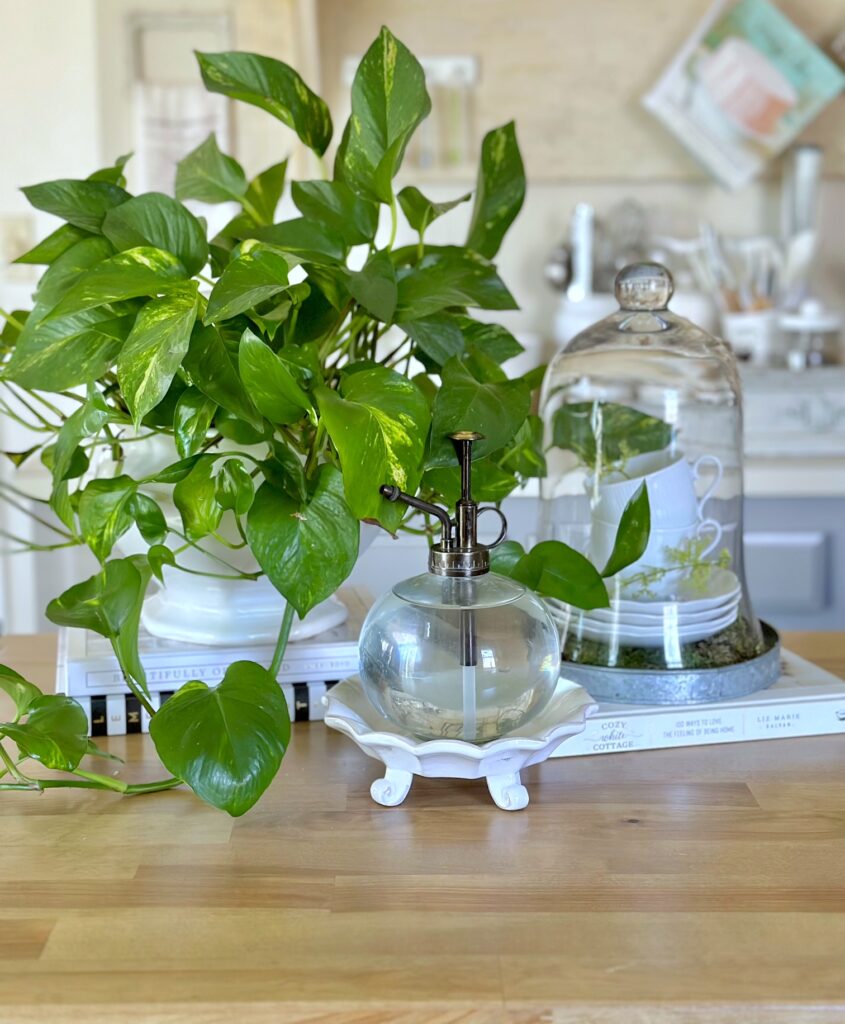
Fertilizing Indoor vs. Outdoor Pothos Plants
Alright, let’s talk about the differences between indoor and outdoor Pothos plants when it comes to fertilizer needs. Picture this: outdoor Pothos plants, they’re like adventure seekers, soaking up the sun, and dancing in the rain. With all that action, they might need a bit more TLC in the form of frequent fertilization to replenish those nutrients washed away by rain or watering.
Now, indoor Pothos plants, they’re more like the chill companions, basking in the cozy indoor ambiance. Since they’re not battling the elements like their outdoor buddies, they might not need as much fertilizer. But hey, don’t forget, they still appreciate a little nutrient boost now and then to keep them thriving indoors.
So, whether your Pothos is an outdoor explorer or an indoor homebody, keep an eye on their vibes and adjust the fertilizer frequency accordingly. After all, happy plants make for happy plant parents!
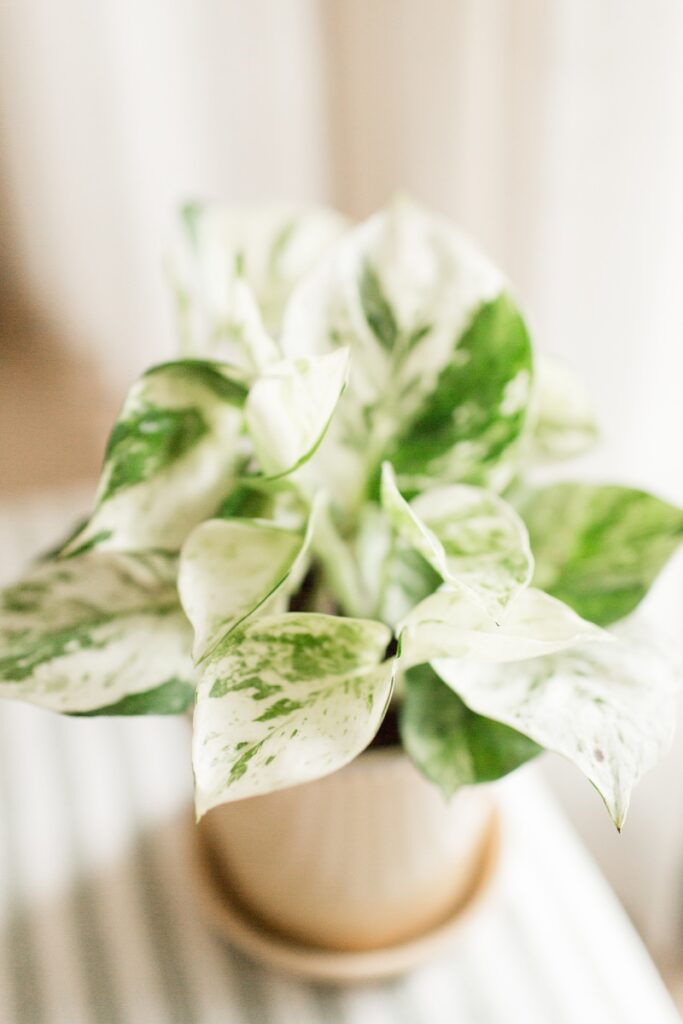
Homemade Fertilizer Recipe
About This Homemade Fertilizer Recipe
This homemade fertilizer recipe using household waste and products is a fantastic way to provide your Pothos plants with the essential nutrients they need to thrive. Banana peels and coffee grounds are rich in potassium, nitrogen, and phosphorus – the primary nutrients that all plants require for healthy growth. This fertilizer is also organic, which means it contains natural sources of nutrients that are easily absorbed by the plant’s roots. The fermentation process helps to break down the organic material and release the essential elements necessary for the plant’s growth. This recipe is easy to make and an eco-friendly way to reduce household waste while providing your Pothos plants with the perfect multivitamin for optimal growth.
Organic fertilizer contains natural sources of nutrients that are easily absorbed by the plant’s roots.
Step-by-step Instructions for Making a Homemade Fertilizer for Pothos Plants using Household Wastes
Materials:
- 3-4 banana peels
- 1/4 cup of used coffee grounds
- 1 empty container with lid
- 2 cups of water
Instructions:
- Collect Ingredients
Cut the banana peels into small pieces and add them to the empty container.
Add the coffee grounds to the container with the banana peels. - Brew the Mixture
Pour water into the container, making sure the banana peels and coffee grounds are fully submerged. Close the lid and shake the container to mix the ingredients. Let the mixture sit for 2-3 days, stirring occasionally to promote fermentation.
- Strain and Dilute
After 2-3 days, strain the mixture through a fine-mesh sieve or cheesecloth to remove any solid pieces. Dilute the liquid fertilizer with water at a ratio of 1:10 (one part fertilizer to ten parts water).
(Yield: 1 cup of the diluted fertilizer and mix it with 9 cups of regular water (following the 1:10 dilution ratio), you will have a total of 10 cups of the final solution.) - Feed to Plants
Pour approximately 1 cup of the diluted fertilizer onto the soil around the base of your Pothos plants. Repeat this process every two weeks during the growing season to provide your Pothos plants with essential nutrients.
Using household waste and products to make a homemade fertilizer is not only a great way to provide essential nutrients to your Pothos plants but also an eco-friendly way to reduce waste.6 By following these simple steps, you can create a nutrient-rich fertilizer that will promote healthy growth and thriving Pothos plants in your home or garden.
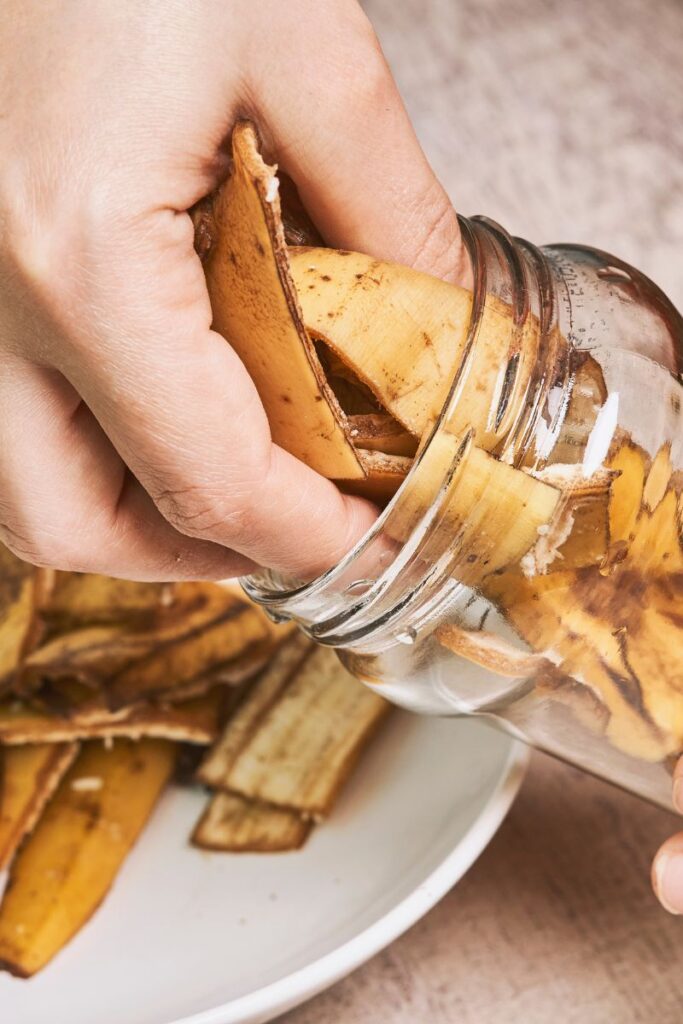
Storing Your DIY Fertilizers
After concocting your own all-natural plant food, it’s crucial to store them correctly for safety and maximum freshness.
First, transfer homemade mixes like compost tea into clearly labeled, airtight containers. Note the contents and date created. Opaque bottles work best. This preserves nutrients and identifies what’s inside.
Next, store containers safely out of sunlight and away from heat, as warmth degrades nutritional quality over time. Securing them away from kids and pets also prevents accidental ingestion.
Additionally, thoroughly wash equipment used to make fertilizers. This prevents harmful bacteria from contaminating the mixes or garden.
Finally, properly dispose of any excess homemade fertilizer rather than dumping down drains. Check guidelines regarding composting or recycling nutrients in your area. Avoiding environmental runoff maintains eco-friendliness.
Following these simple storage and handling steps keeps homemade brews fresh and effective while prioritizing safety.
Caring for Pothos: Beyond Fertilizer
Well-Balanced Soil Mix
While fertilizer feeds pothos plants, a healthy, nutrient-rich soil mix provides the strong foundation needed for roots and growth to flourish. An ideal potting mix blend emphasizes drainage, moisture retention, and organic matter.
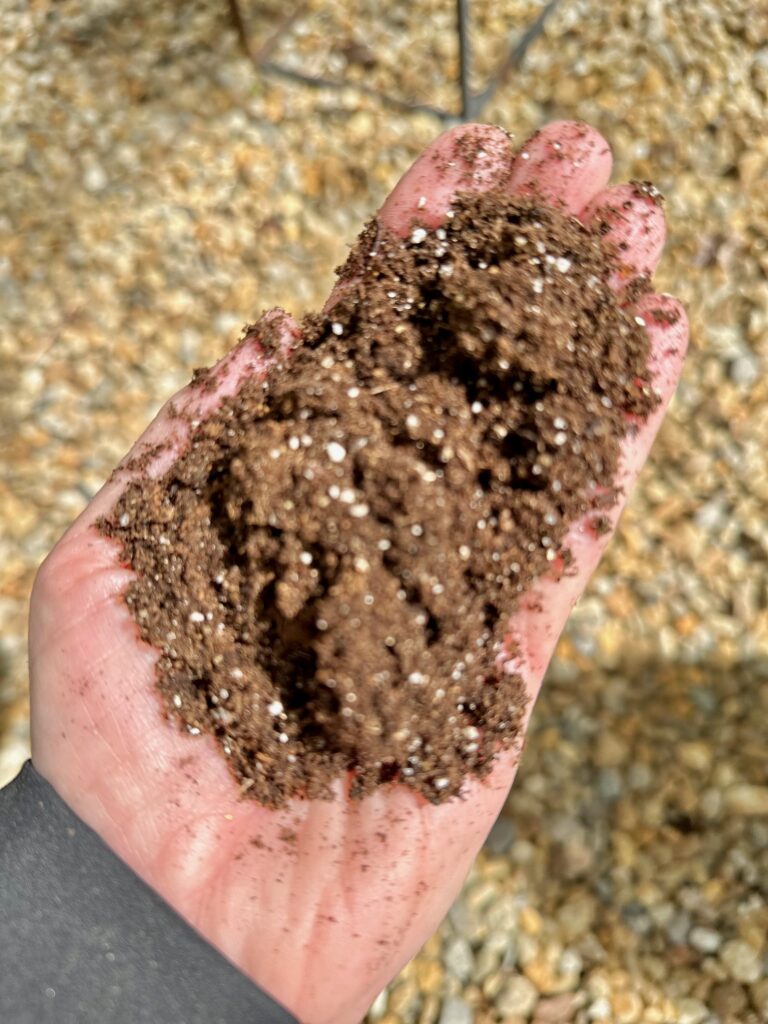
Connecting Watering and Fertilizing
Striking the right balance between hydration and nutrition keeps pothos vigorous. Overwatering risks nutrient deficiencies just as too much plant food can damage roots. Monitoring moisture levels ensures fertilizer gets properly absorbed.
Adequate watering is essential for the uptake of nutrients from the soil and the proper functioning of plant cells, while fertilizers provide essential nutrients that may not be present in sufficient quantities in the soil.
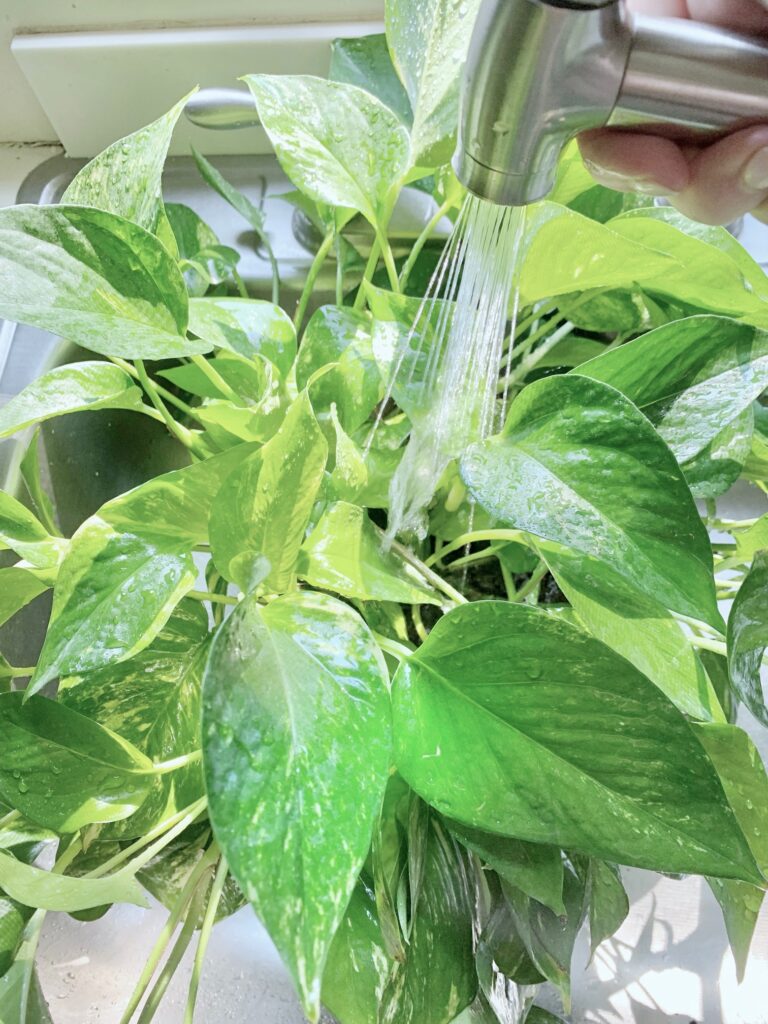
Sunlight and Fertilizer Work Better Together
Bright but indirect light (6-8 hours daily) optimizes the benefits of fertilizing pothos vines. When sunlight levels and nutrients align, these trailing plants achieve maximum healthy leaves and vibrant length.

Frequently Asked Questions about Fertilizing Your Pothos Plant
There are many DIY fertilizers that provide excellent nutrition for pothos using household ingredients like compost tea, eggshell water, aquarium water, and more. Refer to recipes earlier in this post!
For best results, apply homemade fertilizers every 2-4 weeks during the active growing season – early spring through summer. Reduce frequency in the fall and winter months. Adjust based on the plant’s condition and growth patterns.
Yellow leaves, brown crispy tips, stunted growth, and root issues indicate overfeeding. Immediately reduce fertilizer amounts and flush soil if you notice these troubling symptoms.
Stick to recommended recipes and frequencies. More is not better! Also, take seasonal breaks from fertilizing and continually monitor how plants respond to your homebrewed mixes.
Concocting your own pothos teas and tonics is rewarding, eco-friendly, and tailored to your plant’s needs. Plus it takes feeding and care to a more personal and attentive level!

I hope this post, DIY Pothos Fertilizer: The Best Kept Secret for Lush Plants has helped provide you with useful information on how to fertilize your Pothos plants. Remember, fertilization is an important aspect of caring for indoor plants that can greatly enhance the health and beauty of your Pothos. By following the tips and guidelines outlined in this post, you can ensure that your Pothos thrives and flourishes.
I would love to hear your thoughts and experiences on using natural fertilizer for your Pothos plants. Do you have any tips or tricks that have worked well for you? Please share your thoughts in the comments section below. Your insights and experiences could help other plant lovers care for their Pothos plants with greater success!
For more Pothos plant care topics visit:
- The Ultimate Pothos Soil Mix Recipe
- How to Plant Pothos Cuttings: A Simple Step-by-Step Guide
- How Often Should I Water a Pothos Plant?
Keep growing friends!

References
- Support, E. W. (2023, October 11). A guide to understanding fertilizers. OSU Extension Service. https://extension.oregonstate.edu/gardening/techniques/guide-understanding-fertilizers ↩︎
- Landschoot, P., PhD. (n.d.). How to calculate a fertilizer ratio. https://extension.psu.edu/how-to-calculate-a-fertilizer-ratio ↩︎
- Unflavored gelatin makes for an excellent fertilizer. (n.d.). Cape Gazette. https://www.capegazette.com/article/unflavored-gelatin-makes-excellent-fertilizer/26790 ↩︎
- Author(s): University of Wyoming Title: “Plants Perk Up” Publication Date: Summer 2017 URL: https://www.uwyo.edu/barnbackyard/_files/documents/magazine/2017/summer/plantsperk0717.pdf ↩︎
- Title: Egg Shell Fertilizer Guide Website: MasterClass Last Updated: December 9, 2021 URL: https://www.masterclass.com/articles/egg-shell-fertilizer-guide ↩︎
- Kuligowski, K., Konkol, I., Świerczek, L., Chojnacka, K., Cenian, A., & Szufa, S. (2023). Evaluation of Kitchen Waste Recycling as Organic N-Fertiliser for Sustainable Agriculture under Cool and Warm Seasons. Sustainability, 15(10), 7997. https://doi.org/10.3390/su15107997 ↩︎


